Easy & Soft Vegan Flatbreads (Minimal Kneading)
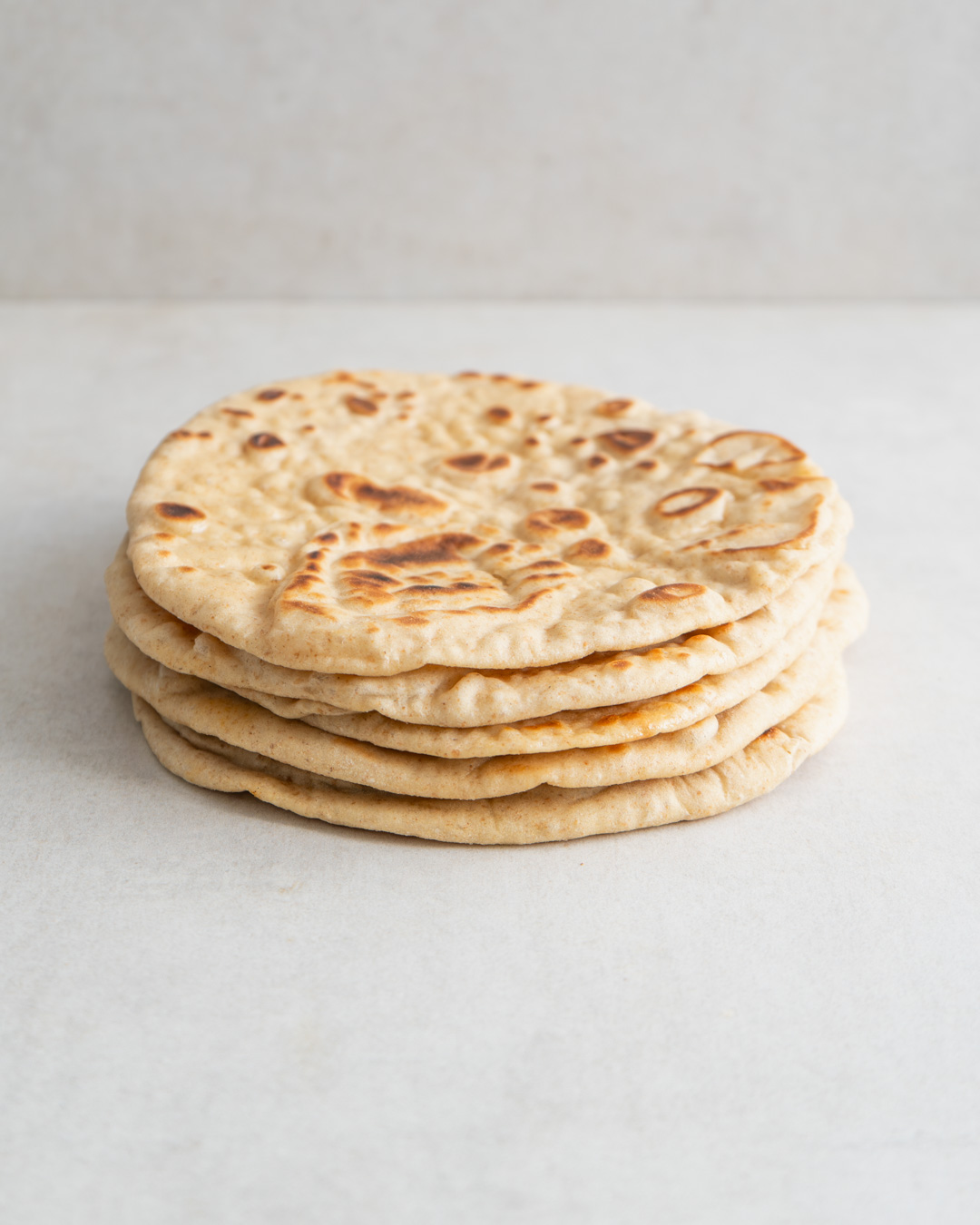
There are many times when I cook a recipe that begs to be paired with a soft flatbread. For instance, to scoop up Hummus, Mutabal or Toum. Sadly, store-bought flatbreads often disappoint on that front. Rather than providing a beautiful vessel to elevate those dips, they tend to be deflated and stale. Plus, they are often packed with unnecessary ingredients aimed at making them shelf-stable. Recently, this frustration has led me to develop my own vegan flatbread recipe. It’s not an authentic version from a particular region, though it is loosely inspired by Greek Pita. I’ll take you through all the steps to make soft, leavened flatbreads that are perfect for dips, but also make a wicked wrap for stuffing.
An Ode to Flatbreads
Flatbreads are one of the oldest and most universal types of bread, dating back over 6,000 years. They were likely some of the first breads ever made—simple combinations of flour and water, flattened and cooked over an open fire. What’s fascinating to me is how nearly every culture has its own version, leavened or unleavened, shaped by local ingredients and traditions.
India has roti, naan and paratha, each with unique textures and cooking methods. The Middle East boasts pita and lavash, perfect for stuffing or tearing into dips. In Mexico, corn tortillas, also considered a flatbread, have been a staple since Aztecs times. Injera, an Ethiopian sourdough flatbread made from teff flour, doubles as both food and utensil, scooping up flavorful stews. In Italy, piadina is a thin, olive oil-based flatbread. And the list goes on…
What makes flatbreads timeless is their adaptability. They can be thick or thin, soft or crisp, leavened or flat, plain or packed with flavor. They work as wraps, as scoops or as the base for whatever you have on hand. Unlike a crusty sourdough, they don’t ask for much practice or effort—just a handful of ingredients, a hot pan and a bit of prep.
This recipe is as simple as it gets. A mix of bread and wholemeal flour gives just the right balance of softness and structure. Olive oil keeps them pliable and a little yeast adds enough lift and softness without turning them into something too bready. Whether you’re using them to scoop up dips, creating beautiful wraps or layering on toppings, these flatbreads do the job well.
Ingredients You’ll Need + Substitutions
- Fresh yeast: Helps the dough rise with a pleasant, yeasted flavor. Swap with dried yeast if needed.
- Golden granulated sugar: Feeds the yeast for better fermentation. Any other sugar will work too.
- Olive oil: Adds richness and moisture. You can use any neutral oil instead.
- Bread flour: Gives the dough a rich gluten-structure that is easy to handle. You can use plain flour instead, but the dough will be stickier (add a little less water to compensate).
- Wholemeal flour: Adds nuttiness, fiber and a wholesome flavor. Substitute with more bread flour if preferred, but add 10ml less water.
How to Make Flatbreads (Step-by-Step)
Mix ingredients. Crumble the yeast into a large bowl. Add the sugar, olive oil and water and stir to dissolve the yeast. Add the flours and salt and use your hands to mix everything into a rough dough.
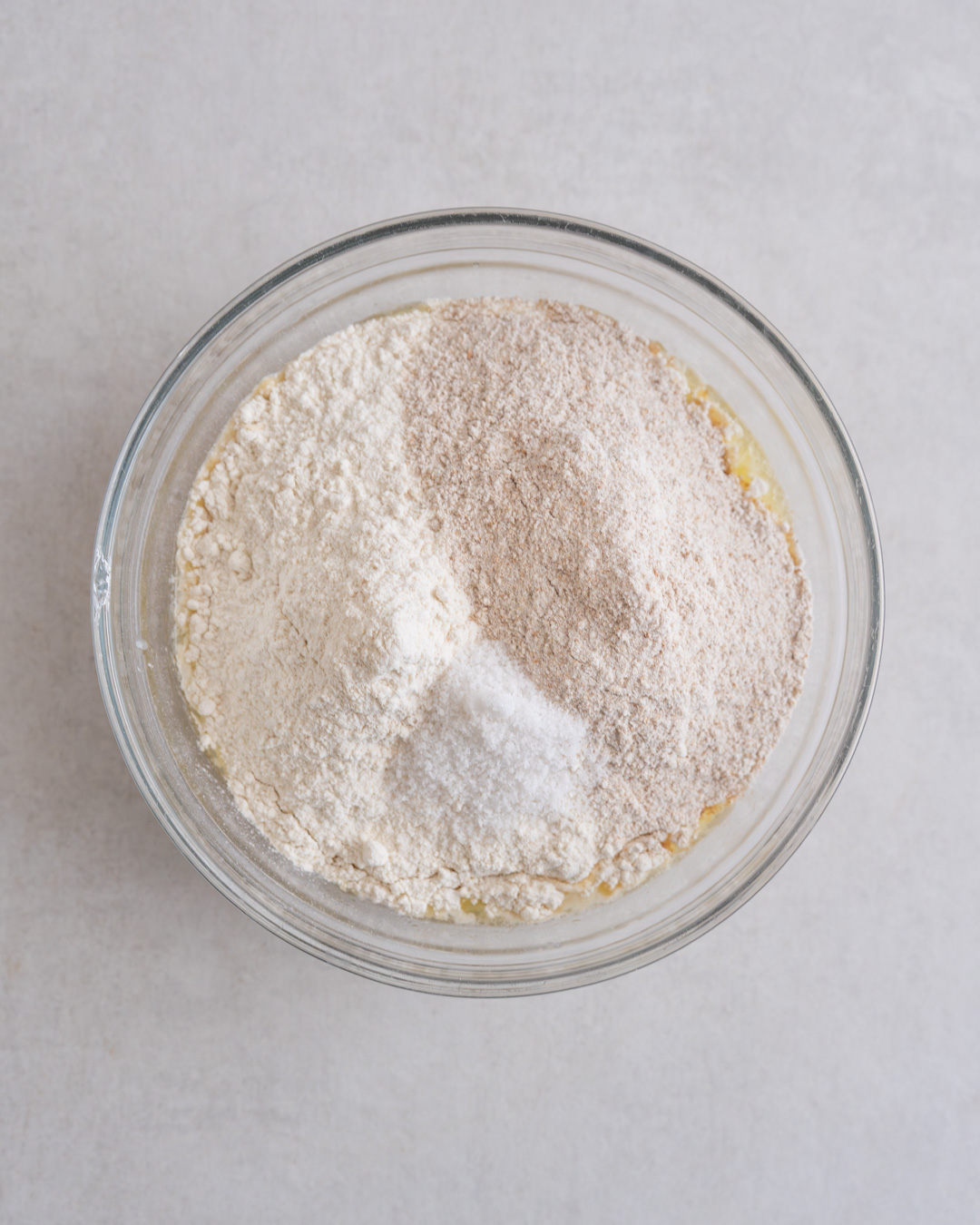
Rest & knead. Transfer the dough to a work surface, cover it with the bowl placed upside-down over it and let it rest for 5 minutes, which will kick-start the gluten development. Once rested, knead the dough for 3-4 minutes until smooth and elastic.

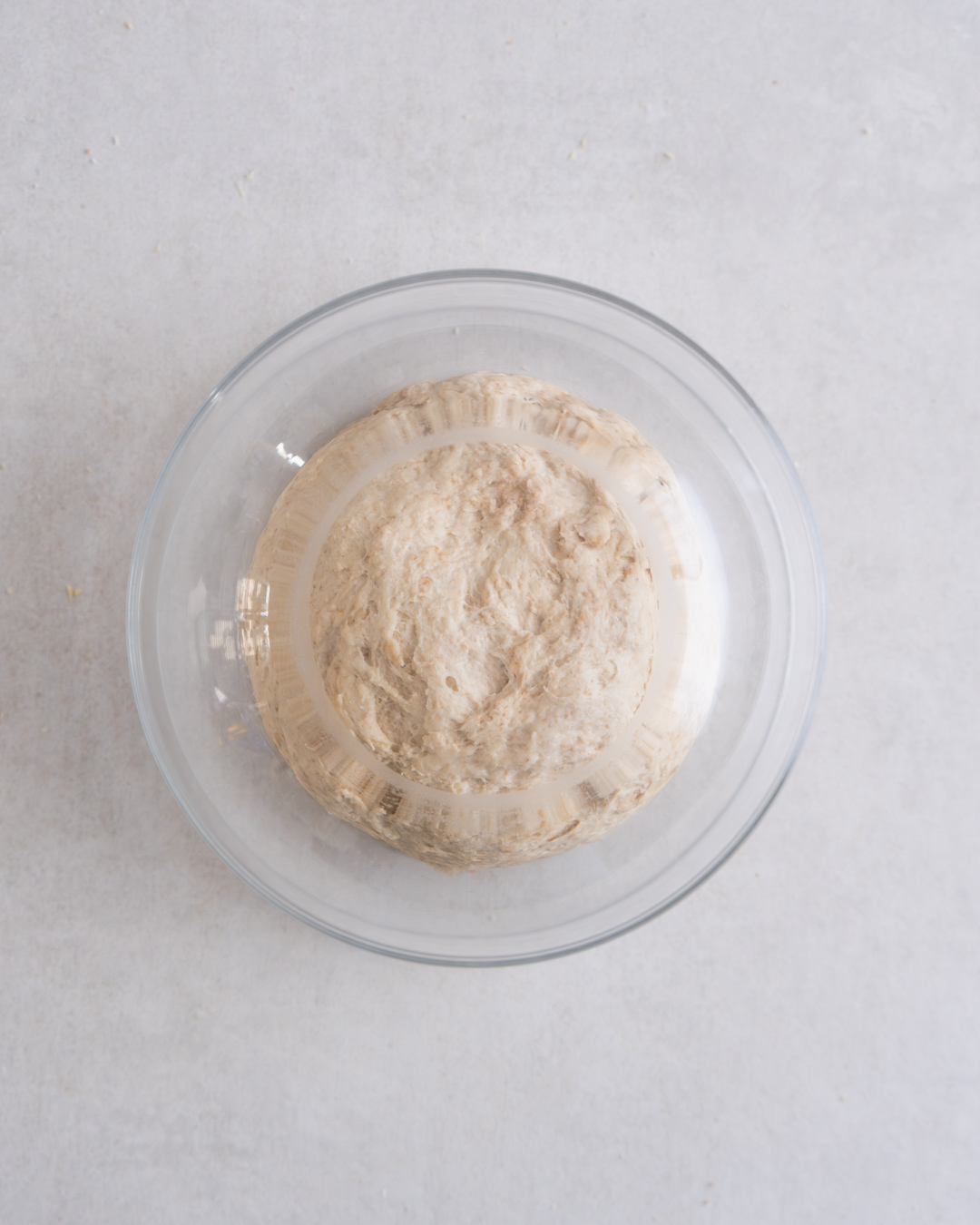
Shape the dough + rest. Shape the dough into a large ball, grease a clean bowl with a little oil and place the dough inside. Cover it with a reusable plastic bag or a damp kitchen towel and leave to double in size for 30–60 minutes (the length of time will depend on the ambient temperature).
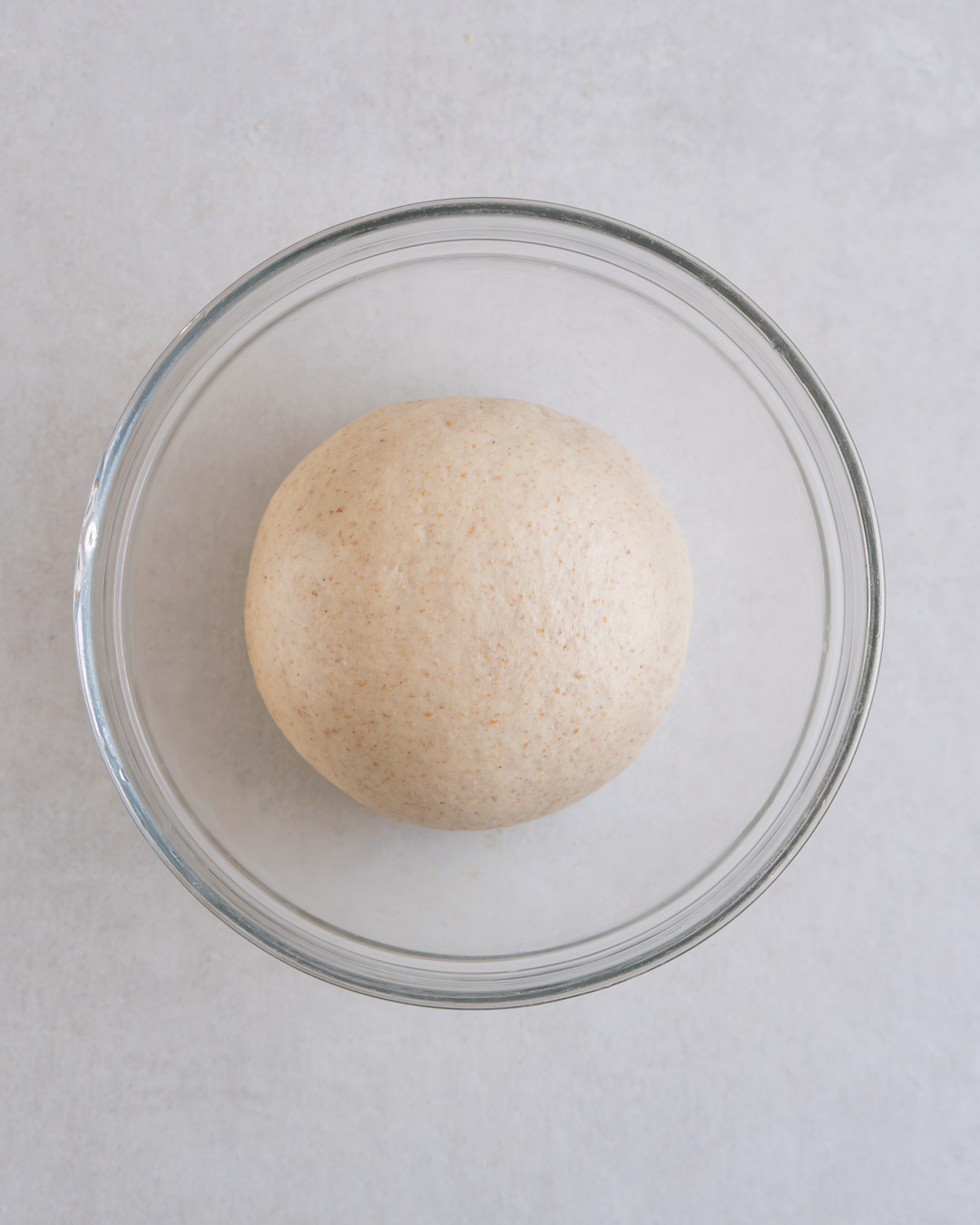
Divide and shape dough. Preheat a large, heavy-based pan over medium heat. As it heats, return the dough to the work surface and divide it into six pieces (around 110g each). Shape each piece into a ball by tucking the edges underneath before stretching it over the work surface in circular movements with one hand. You are aiming to create a smooth surface across the dough. Cover the balls again.
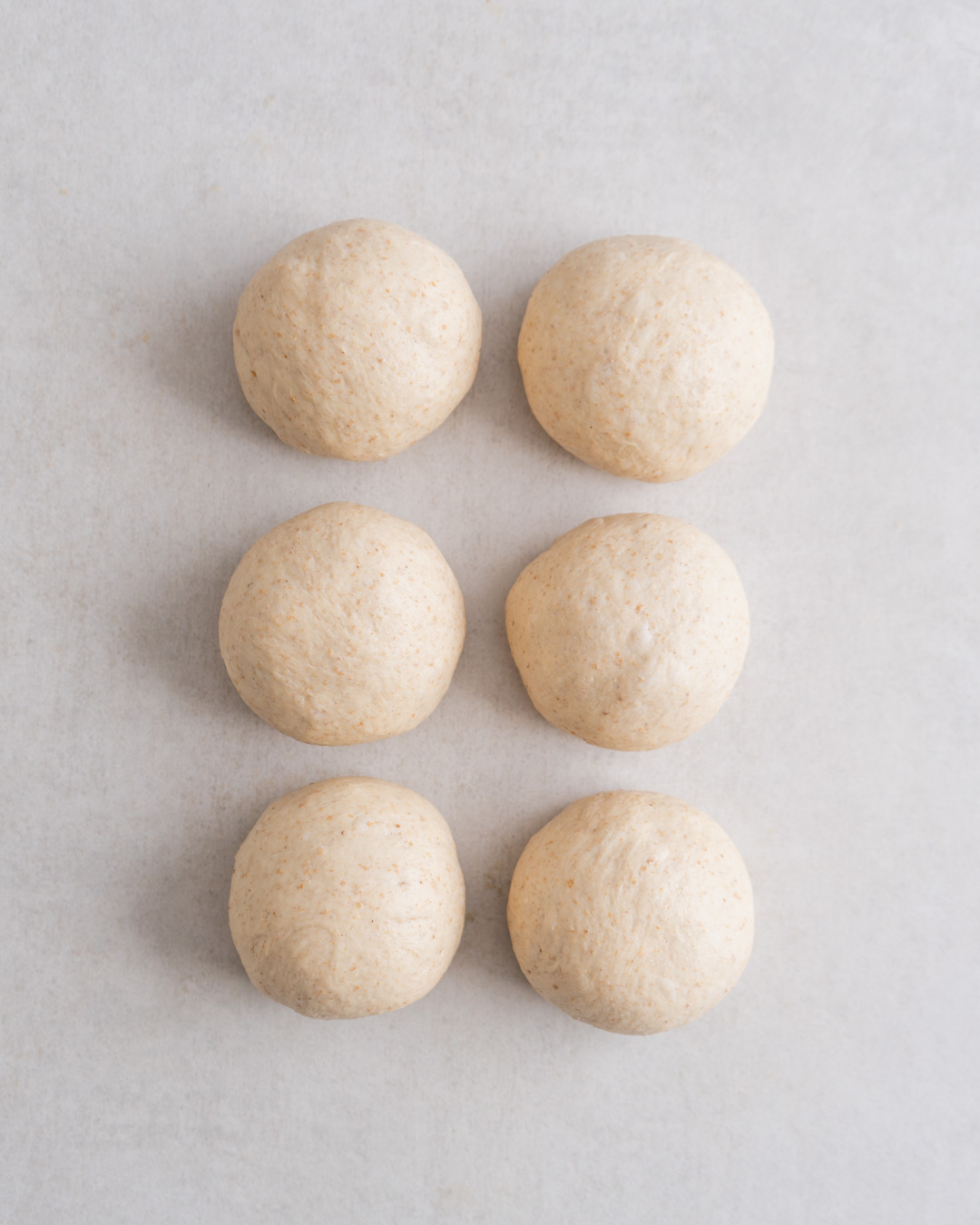
Roll out in circles. Dust the surface with a little flour and roll the dough balls out into 20cm wide circles, placing the rolled dough on a clean tea towel as you go and covering it with another towel to prevent it from drying out.
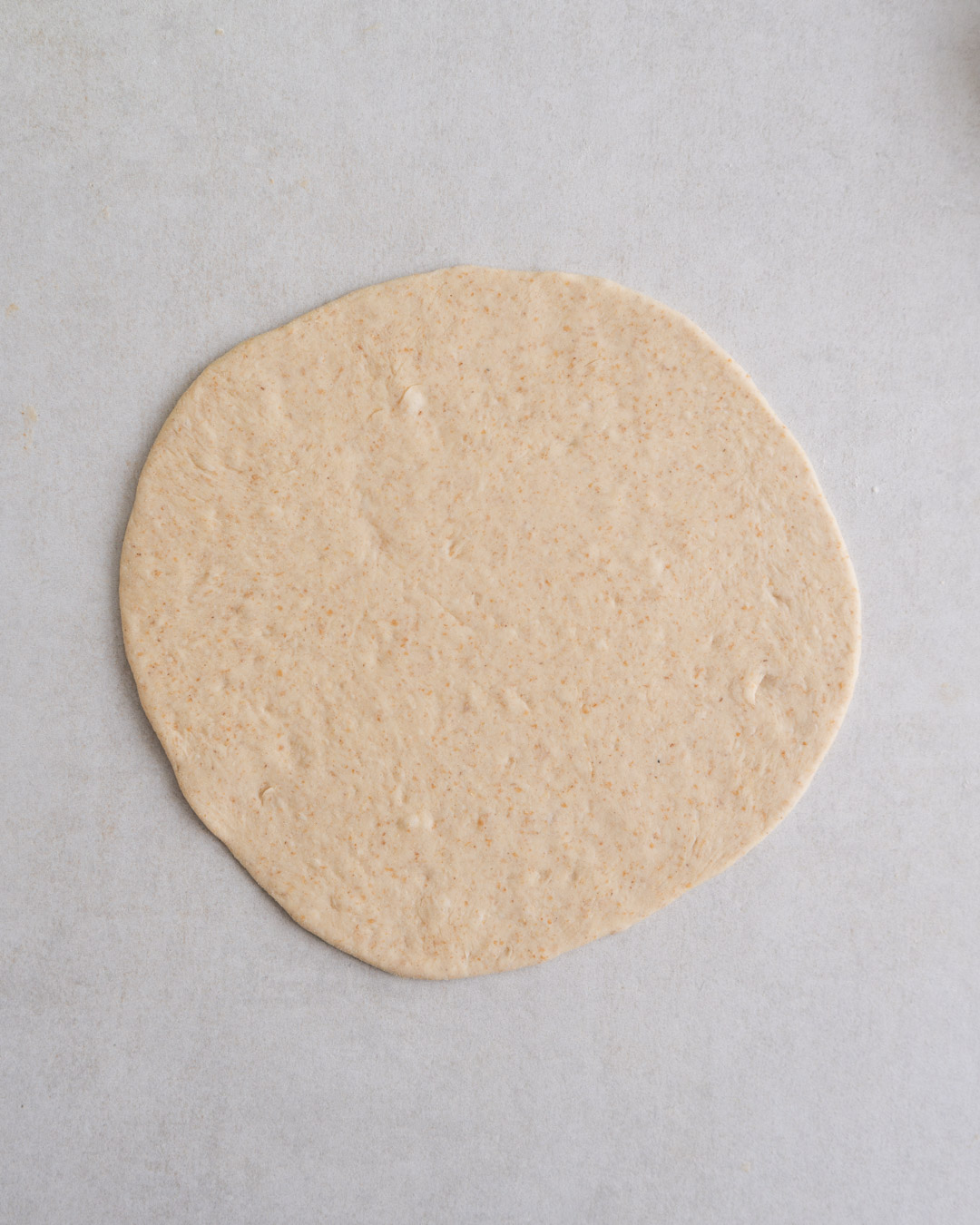
Cook the flatbreads. Now add the piece of dough you rolled out first to the hot pan and cook for around 1 minute until the bottom has golden spots all over.
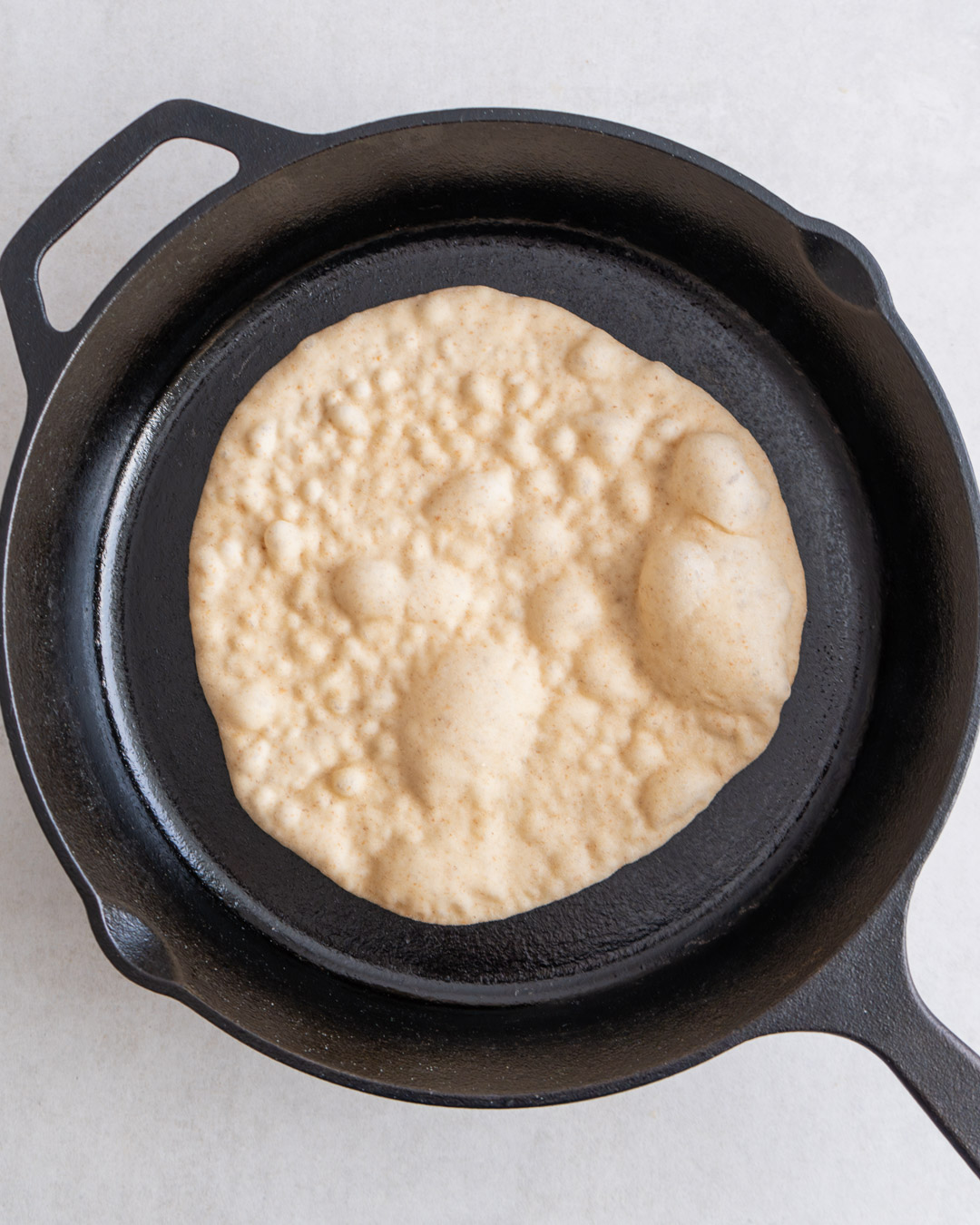
Flip, brush and repeat. Flip it, cook for 1 minute more, then brush with ½ teaspoon of oil, flip it again and repeat, cooking it for 30–60 seconds more on each side until beautifully golden. Transfer to a plate and cover with a clean towel to soften and keep warm. Wipe the pan with kitchen paper and repeat with the rest of the flatbreads.
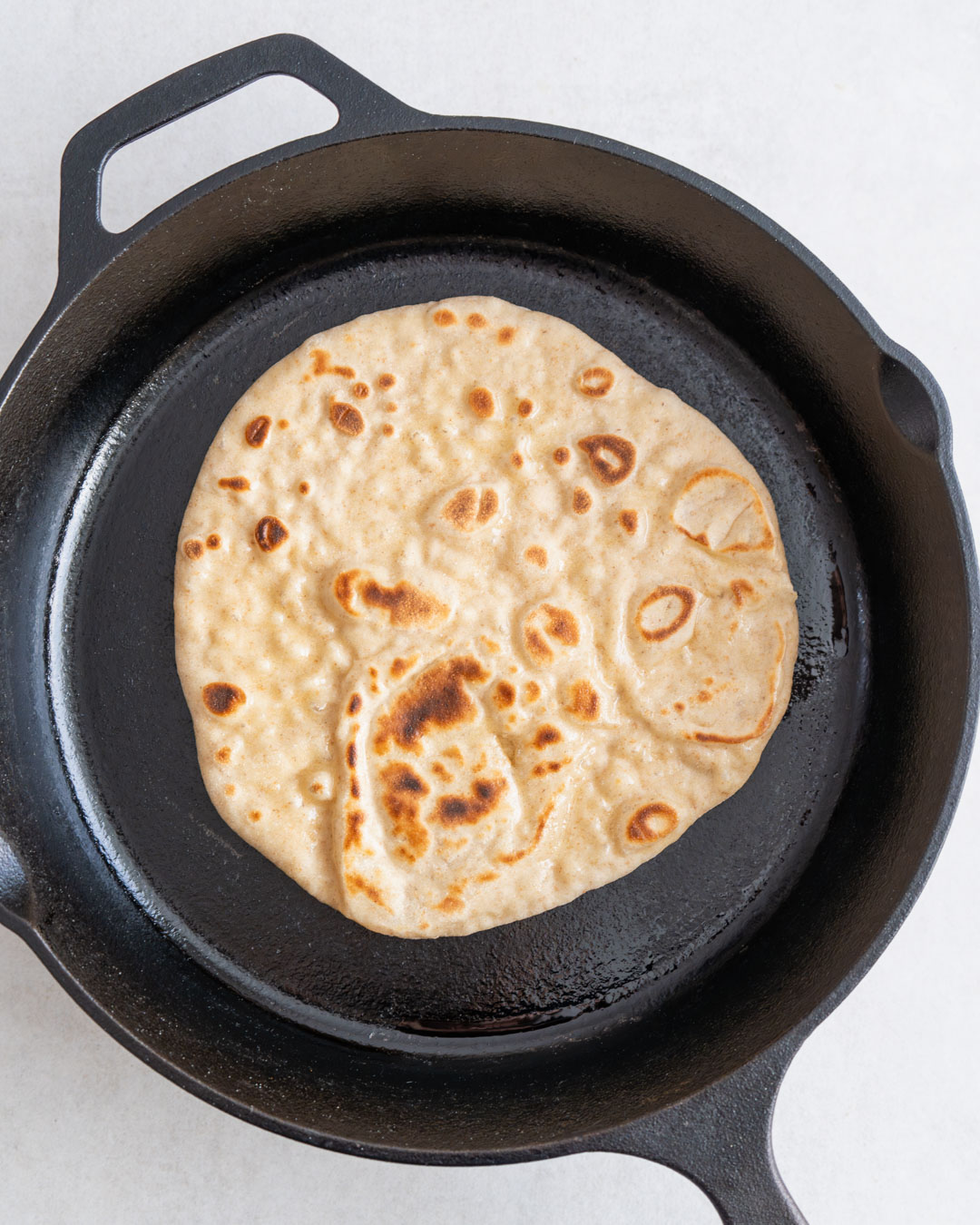
How to Store Pita
Store flatbreads in an airtight container or reusable bag at room temperature for up to 2 days. Or freeze for up to 3 months. To thaw, heat for 10 minutes in a 200°C (180°C fan) oven and wrap in a towel to restore softness.
Other Bread Recipes You Might Like
- Sourdough Focaccia: Light and airy with a crisp crust, perfect for dipping or sandwiches.
- Pita: Soft, chewy flatbreads that puff up in the oven, creating pockets ideal for stuffing or scooping up dips.
- Bread Buns: Fluffy, slightly chewy, and versatile—great for burgers or sandwiches.
**I receive a small commission from affiliate links on this page**
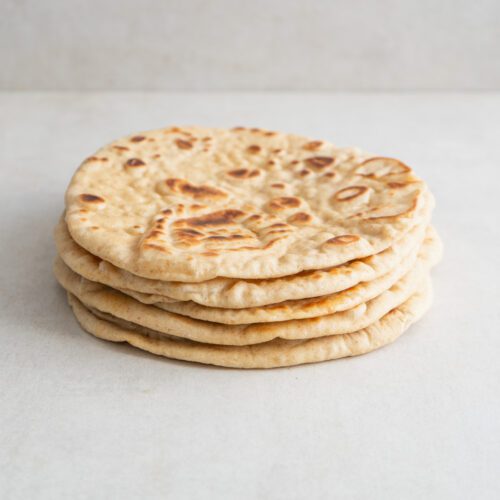
Easy & Soft Vegan Flatbreads (Minimal Kneading)
Ingredients
- 20 g fresh yeast (or a 7g packet dried yeast)
- 1 tbsp golden granulated sugar (10g)
- 3 tbsp olive oil (plus extra for greasing and brushing)
- 230 ml lukewarm water
- 350 g bread flour (plus extra to dust)
- 50 g wholemeal flour
- 1 tsp salt (8g)
Instructions
- Crumble the yeast into a large bowl. Add the sugar, olive oil and water and stir to dissolve the yeast. Add the flours and salt and use your hands to mix everything into a rough dough. Transfer the dough to a work surface, cover it with the bowl placed upside-down over it and let it rest for 5 minutes, which will kick-start the gluten development. Once rested, knead the dough for 3-4 minutes until smooth and elastic.
- Shape the dough into a large ball, grease a clean bowl with a little oil and place the dough inside. Cover it with a reusable plastic bag or a damp kitchen towel and leave to double in size for 30–60 minutes (the length of time will depend on the ambient temperature).
- Preheat a large, heavy-based pan over medium heat. As it heats, return the dough to the work surface and divide it into six pieces (around 110g each). Shape each piece into a ball by tucking the edges underneath before stretching it over the work surface in circular movements with one hand. You are aiming to create a smooth surface across the dough. Cover the balls again.
- Dust the surface with a little flour and roll the dough balls out into 20cm wide circles, placing the rolled dough on a clean tea towel as you go and covering it with another towel to prevent it from drying out.
- Now add the piece of dough you rolled out first to the hot pan and cook for around 1 minute until the bottom has golden spots all over. Flip it, cook for 1 minute more, then brush with ½ teaspoon of oil, flip it again and repeat, cooking it for 30–60 seconds more on each side until beautifully golden. Transfer to a plate and cover with a clean towel to soften and keep warm. Wipe the pan with kitchen paper and repeat with the rest of the flatbreads.
